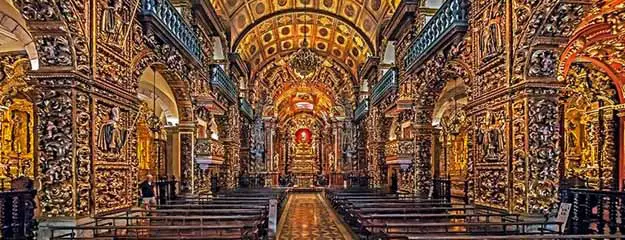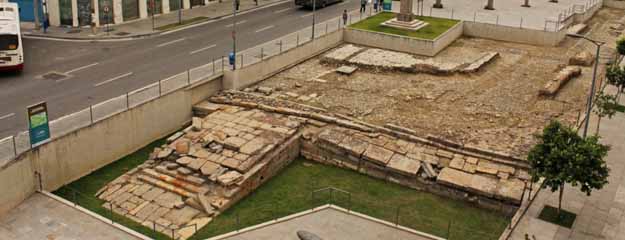Blog
Discover Historic Rio de Janeiro: Historic Landmarks
- Wednesday April 3rd, 2024
- Posted by: Amanda Ennes
- Category: Rio de Janeiro

Dive deep into the vibrant heart of historic Rio de Janeiro, a city brimming with tales waiting to be told. Each street and each building invites you on a captivating journey through time, where iconic landmarks stand as guardians of history. Let us guide you through the winding pathways of Rio, where the past and present merge to create a story rich with cultural heritage.
Table of Contents
ToggleBrief History of Rio de Janeiro
Rio de Janeiro, a city now vibrant with culture and beauty, has a history marked by the arrival of Portuguese colonizers in the early 16th century. Initially encountered by the indigenous Tupi people, the area soon became a focal point for Portuguese expansion in Brazil. The establishment of Rio de Janeiro in 1565 by the Portuguese as a fortification against French privateers marked the beginning of its colonial history. Rio flourished as a port city, pivotal in the sugar trade.
By the 18th century, Rio had grown important in the Portuguese Empire. In 1763, it even became the colony’s capital. However, the prosperity of Rio de Janeiro during these times was built on the backs of enslaved Africans, who were forcibly brought to the city in vast numbers. Soon, the city became the largest slave port in the Americas. Valongo Wharf was the main entry for African slaves, who were sold for plantation work or city labor. In 1888, Brazil abolished slavery and this event changed Rio’s history. Yet, the legacy of this dark period still influences Rio’s culture and society.
Following the proclamation of the Republic in 1889, historic Rio de Janeiro continued to evolve. The city reflects the complex layers of its colonial past, imperial ambitions, and the indelible impact of the African diaspora on the cultural mosaic of Brazil.
Further reading: 15 Interesting Facts About Rio de Janeiro.

Historic Landmarks in Rio de Janeiro
Embark on an unforgettable exploration of Rio de Janeiro’s most treasured sites. Discover the landmarks that define Rio, where every corner tells a story and every view takes your breath away. Join us as we journey through the must-visit places that are the essence of Rio de Janeiro’s enduring charm.
Read more: What To Do in Rio de Janeiro: 70+ Tourist Attractions.
Passeio Público
Passeio Público is a testament to Rio’s colonial past, designed in the 1780s as the first public park in Brazil. This oasis in the city center offers visitors a glimpse into 18th-century landscape design, complete with ornamental fountains and sculptures. Check on Google.
Paço Imperial
Once the administrative heart of the Portuguese Empire in Brazil, this place now thrives as a cultural hub. Paço Imperial has transformed into a vibrant cultural space that hosts art exhibitions and cultural events, blending the historical with the contemporary. Check on Google.
Mosteiro de São Bento
Mosteiro de São Bento is one of Rio’s oldest religious sites, dating back to the 16th century. Its baroque architecture and gold-leafed interiors are a breathtaking sight, offering a peaceful retreat and a glimpse into monastic life. Check on Google.
Museu Nacional de Belas Artes
The National Museum of Fine Arts showcases Brazil’s artistic heritage, with collections spanning from the colonial period to modern Brazilian art. It is a cultural journey through Brazil’s rich history of visual arts. It holds pieces that narrate the rich cultural heritage of historic Rio de Janeiro. Check on Google.
Real Gabinete Português de Leitura
This library is an architectural masterpiece, housing the largest collection of Portuguese literature outside Portugal. Its stunning reading room is a must-see for literature lovers and architecture enthusiasts alike. Check on Google.
Cais do Valongo
Cais do Valongo stands as a somber yet important landmark, pivotal in the transatlantic slave trade. City renovations in 2011 uncovered the site, once buried under layers of earth, revealing a hidden piece of the past. Many enslaved Africans first arrived in Brazil here, from the late 1700s to the early 1800s, but people had forgotten this place over time. Now, as a UNESCO World Heritage site, Cais do Valongo reminds everyone of Brazil’s history with slavery and the deep African influence on its culture. This place holds memories, shining a light on the suffering of countless individuals and celebrating the resilience and cultural impact of the African diaspora in Brazil. Check on Google.
Rua do Lavradio
Rua do Lavradio offers a blend of historical charm and modern vibrancy, known for its antique shops, cultural venues, and lively street fairs. This historic street in the Lapa district is a favorite among locals and tourists for its bohemian atmosphere. Check on Google.
Quinta da Boa Vista
This landmark served as the residence of the Portuguese Royal Family and later, the Brazilian Imperial Family. Today, it is a public park also housing the National Museum of Brazil. It has wide green spaces and a lake, making it a perfect site for picnics and walks. Check on Google.
Caminhos Language Centre is the largest and most exciting Portuguese school in Rio de Janeiro, Brazil. We have an excellent infrastructure, over 15 experienced Brazilian teachers, and a friendly multilingual support staff. We are the only school in Brazil able to offer Portuguese group courses throughout the year on 10 different levels. Moreover, our school also offers more than just Portuguese lessons for foreigners, we offer you the complete Rio de Janeiro experience. Every day we organize 100% free and fun activities for you to socialize and practice your Portuguese. We can also help you with a student visa for Brazil and accommodation in Rio de Janeiro. Follow us on Instagram for some Portuguese tips and news.


 Deutsch
Deutsch Français
Français Português
Português Español
Español
